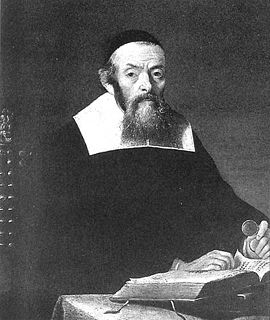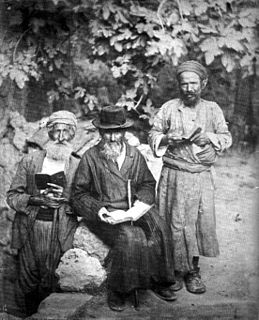Related Research Articles

Ein Yaakov is a 16th-century compilation of all the Aggadic material in the Talmud together with commentaries. Its introduction contains an account of the history of Talmudic censorship and the term Gemara. It was compiled by Jacob ibn Habib and by his son Rabbi Levi ibn Habib.

Sa'adiah ben Yosef Gaon was a prominent rabbi, gaon, Jewish philosopher, and exegete who was active in the Abbasid Caliphate.
Sforno is the name of a prominent Jewish Italian family, many members of which distinguished themselves as rabbis and scholars. The most prominent of these were the following:
Jacob ben Joseph Reischer (Bechofen) (1661–1733) was an Austrian rabbi and halakhist.
David Rosin was a German Jewish theologian from Rosenberg, Silesia.
Simeon ben Zemah Duran, also Tzemach Duran, known as Rashbatz or Tashbatz was a Rabbinical authority, student of philosophy, astronomy, mathematics, and especially of medicine, which he practised for a number of years at Palma. A major 15th century posek, his published decisions in matters of Halacha have been widely quoted in halachic literature for hundreds of years.
Moshe ben Mordechai Galante(Hebrew: משה בן מרדכי גאלאנטי), was a 16th-century rabbi. He was a disciple of Joseph Caro, and was ordained by Caro when he was only twenty-two years old. He wrote sermons for a wedding, for Passover, and for a thanksgiving service, printed with the younger Obadiah Bertinoro's commentary on the Book of Esther. He also wrote Miftaḥ ha-Zohar, an index of Biblical passages found in the Zohar and additions from old manuscripts, Kehillat Ya'aḳob, a cabalistic commentary on Ecclesiastes, and responsa with additions by his son Jedidiah Galante.
Josiah ben Joseph Pinto was a Syrian rabbi and preacher born in Damascus. His father, Joseph Pinto, was one of the rich and charitable men of that city. Josiah was a pupil of various rabbis in Talmud and Kabala, and later, after his father's death, he studied Talmud under Jacob Abulafia, who ordained him as rabbi. Pinto's permanent residence was in Damascus, where later he officiated as rabbi until his death in Feb. or March 1648. He went twice to Aleppo, and in 1625 he moved to Safed with the intention of settling there, but the death of his young son, Joseph, which occurred a year later, induced him to return to Damascus.

Jacob ben Aaron Sasportas, was a Rabbi, Kabbalist, and anti-Sabbatean. He was the father of Isaac ben Jacob Sasportas.

Hayyim ben Jacob Abulafia was a rabbinical authority. He was the grandfather of Hayyim ben David Abulafia and grandson of Isaac Nissim aben Gamil. Abulafia was a rabbi in Smyrna, where he instituted many wholesome regulations. In his old age (1740) he restored the Jewish community in Tiberias.

Yitzchak Yaacov Reines, was a Lithuanian Orthodox rabbi and the founder of the Mizrachi Religious Zionist Movement, one of the earliest movements of Religious Zionism, as well as a correspondent of Theodor Herzl.
David ben Judah Messer Leon was an Italian rabbi, physician and writer, who defended the value of secular disciplines and the Renaissance humanities as an important part of traditional Jewish studies.
Isaiah Berlin also known as Yeshaye Pick, was a German Talmudist.
Meir ben Samuel, also known by the Hebrew acronym RaM for Rabbi Meir, was a French rabbi and tosafist, who was born in about 1060 in Ramerupt, and died after 1135. His father was an eminent scholar. Meir received his education in the Talmudical schools of Lorraine, his principal teachers being Isaac ben Asher ha-Levi and Eleazar ben Isaac of Mainz, with whom he later carried on a correspondence.
David Pardo was an 18th-century Italian rabbi and liturgical poet who lived for some time in Sarajevo, Bosnia and in Jerusalem. Among other things, he authored a commentary on the Sifra on Leviticus and Maskil le-David, a super-commentary on Rashi on the Torah.
Isaac ben David Pardo was a rabbi as well as the author of "To'afot Re'em", a commentary on the responsa of Rabbi Ahai of Shabha, with an index of the different responsa. He succeeded his father, Rabbi David Pardo, as rabbi of Sarajevo, Bosnia. His brother was Jacob Pardo.
Pardo is a very old surname of Sephardic Jewish origin and that derives from the Greek and Latin name Pardus which means leopard, to later change to Spanish Pardo meaning brown and referring to the color of the feline, in Latin "Panthera pardus" (leopard); nicknamed of this way because of those Jews who had the characteristic tan skin color. Israel was conquered by the Greeks and Romans, and many Jews began to adopt Greeks and Latin names. This surname belongs to the Jewish people who settled in the Iberian Peninsula, being at that time the ancient Roman province of Hispania, which later with the arrival of Christianity, some Jews would convert to have a better social status, this being long before being forced to convert to Christianity by the Catholic Monarchs or their subsequent expulsion. Today it is also found in countries including Israel, Spain, Colombia, Greece, Turkey, the United States, Curaçao, Mexico, Peru, Argentina, Venezuela, Chile and Italy. Members of the Pardo family have distinguished themselves mainly in the Levante region of the Mediterranean.
Joseph Pardo was an Italian rabbi and merchant. He was born in Thessaloniki, but went to Venice before 1589, where he served as rabbi to the Levantine community and also engaged in business. Later, he emigrated to the Netherlands and was appointed Hakham of the Bet Ya'akob congregation in Amsterdam founded by Jacob Tirado, holding office from 1597 until his death.
Jacob ben Joseph Harofe, also known as Yaakov bar Yosef, was a 19th-century Talmudic scholar and dayan in Baghdad, Iraq. He was considered one of the greatest Torah scholars of his generation. He authored many Torah novellae, homiletics, and commentaries. His most notable disciple was Hakham Abdallah Somekh.
Ḥayyim Yitzḥak Mussafia was an 18th- and 19th-century Talmudist.
References
- 1 2
 One or more of the preceding sentences incorporates text from a publication now in the public domain : Singer, Isidore; et al., eds. (1901–1906). "Jacob ben David Pardo". The Jewish Encyclopedia . New York: Funk & Wagnalls. Retrieved June 16, 2014.
One or more of the preceding sentences incorporates text from a publication now in the public domain : Singer, Isidore; et al., eds. (1901–1906). "Jacob ben David Pardo". The Jewish Encyclopedia . New York: Funk & Wagnalls. Retrieved June 16, 2014. - ↑ קהלת יעקב (in Hebrew). Retrieved June 18, 2014.
- ↑ אפי זוטרי (in Hebrew). OCLC 233109278 . Retrieved June 18, 2014.
- ↑ תקפו שׁל נס (in Hebrew). Retrieved June 18, 2014.
- ↑ מעשׂה נסים (in Hebrew). Retrieved June 18, 2014.
Friedberg, Bernard. בית עקד ספרים (in Hebrew). Retrieved June 18, 2014. - ↑ מנחת אהרן (in Hebrew). OCLC 233099118 . Retrieved June 18, 2014.